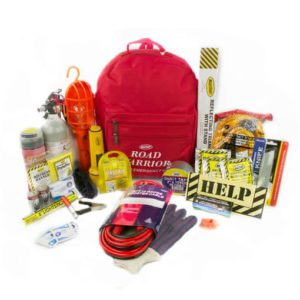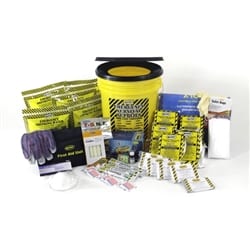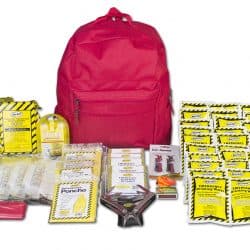Most all government agencies, like your state emergency management and FEMA, recommend that everyone have a plan to last for 72 hours after an emergency or disaster. The theory is that help will arrive by this time and government services will be available for you to rely on. Also, about this time, things are usually back to normal for the most part after emergencies and disasters. There are exceptions to this, but this is where government services will be in place to assist residents affected by the disaster or emergency. A 72-hour kit is designed and stocked to help you do this.
What a 72-Hour kit is
The items included in a 72-hour kit are food, water and a first aid kit along with other items you might need during an emergency or disaster, that will get you through the first 72 hours before help arrives. There are kits that are for just one person, or kits that will accommodate more people. You can decide how many people will rely on the kit, and then decide the number of kits needed that will meet the needs of all. You can find kits designed for different numbers of people here.
The kits come prepackaged in some type of tote that is easily stored until it is needed. You can also grab the kit if you must leave in a hurry so it is with you. They are not bulky and don’t take up much room, so there is no reason for anyone not to have a kit in their home for themselves and their family.

These kits are also very beneficial to have at your office and in the vehicles. We never know when an emergency will happen or where we will be, so having one where you spend most of your time, such as work and home, will allow you to have what you might need until help arrives or the emergency ends. Compare car kits here, and office kits here.
A quick story about how a kit will help in the car is from several years ago when Atlanta, Ga had an ice storm that the weather forecasters thought would not really cause any trouble for the city, left people stuck in cars on the interstate for up to 24 hours. The roads were covered in ice and people could literally not move. Help could not get to them because cars were just sliding and not able to move. The people that were stranded on the interstates did not have food or water in their cars so they had to just starve until they were able to get moving again, or help arrived. Having a 72-hour kit in the car, or a winter car kit, during this unexpected ice storm would have allowed the people stuck the ability to have food and water to make the hours easier to tolerate. No one was expecting things to get as bad as they did with the ice storm, so no one was prepared for what actually happened. They knew there would be freezing rain and sleet, but it was not supposed to last long nor accumulate because the ground was too warm.
Buying a Pre-made Kit vs. Building Your Own
There are arguments for both as to which is best, so if you have the time to search and purchase what you will need then make your own. If you don’t want to have to think about it and just want to get everything delivered in a tote, you can just set aside, then get you a pre-made kit designed for lasting 72-hours during an emergency.
One thing to consider with both is it will probably cost more money to build you own once you pay for each item and shipping cost. Don’t forget your time as well that will be spent searching for everything. A pre-made kit will be discounted because companies are building the kit for you, and the companies that sell 72-hour kits usually offer free shipping over a certain amount and the kit will meet that requirement.

Always Keep Your Kit Current
You will want to check your kit just like you would any of your equipment to make sure it still functions properly or past expiration dates.
If something is not how it should be, you will want to replace it immediately. Don’t wait with this because again you never know when you will need it.
Know what you have and how to use it
Once you get the 72-hour kit that you ordered, you will need to see what is in it and learn to use the items that are not familiar to you. Resist the urge to just put the kit up until it is needed. You don’t want to be in the position of relying on the kit and not knowing how to use everything. This is just like not having a kit. Skills are important during emergencies and disaster, so always practice the skills you need with everyone in the family.
Conclusion
A 72-hour kit will help make things easier during emergencies and disasters until help can arrive. State and federal emergency management agencies recommend everyone have a 72-hour kit because they know this is about how long it will take to get help mobilized and to areas affected by emergencies and disasters. I recommend you have one of these as well in all places you spend a good amount of you time. This is usually at home and work, so make sure you have a kit for both locations. Your car is another place to consider keeping a kit because you never know if you will get stranded and for how long until help arrives, or you can get out.
If you have a 72-hour kit and had to use it during an emergency, please share your experience with us. If you have questions about 72-hour kits please ask here.
